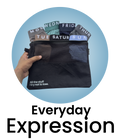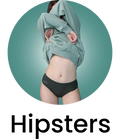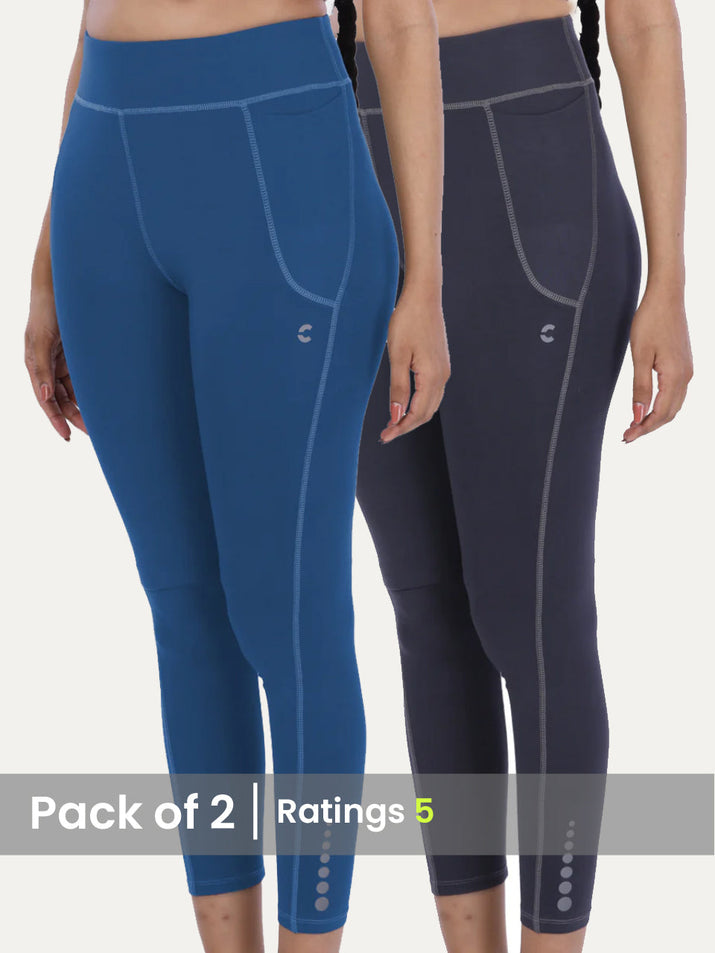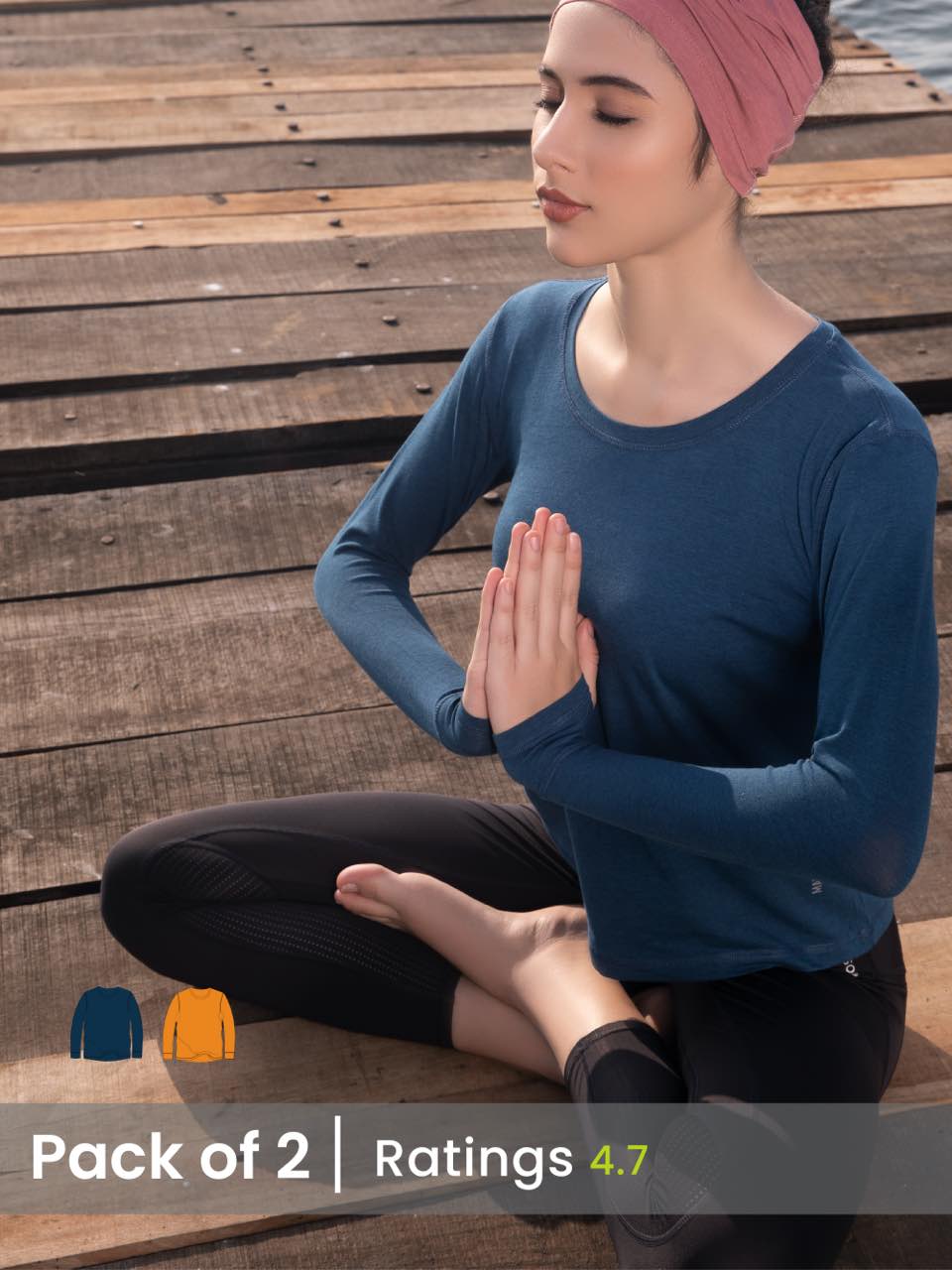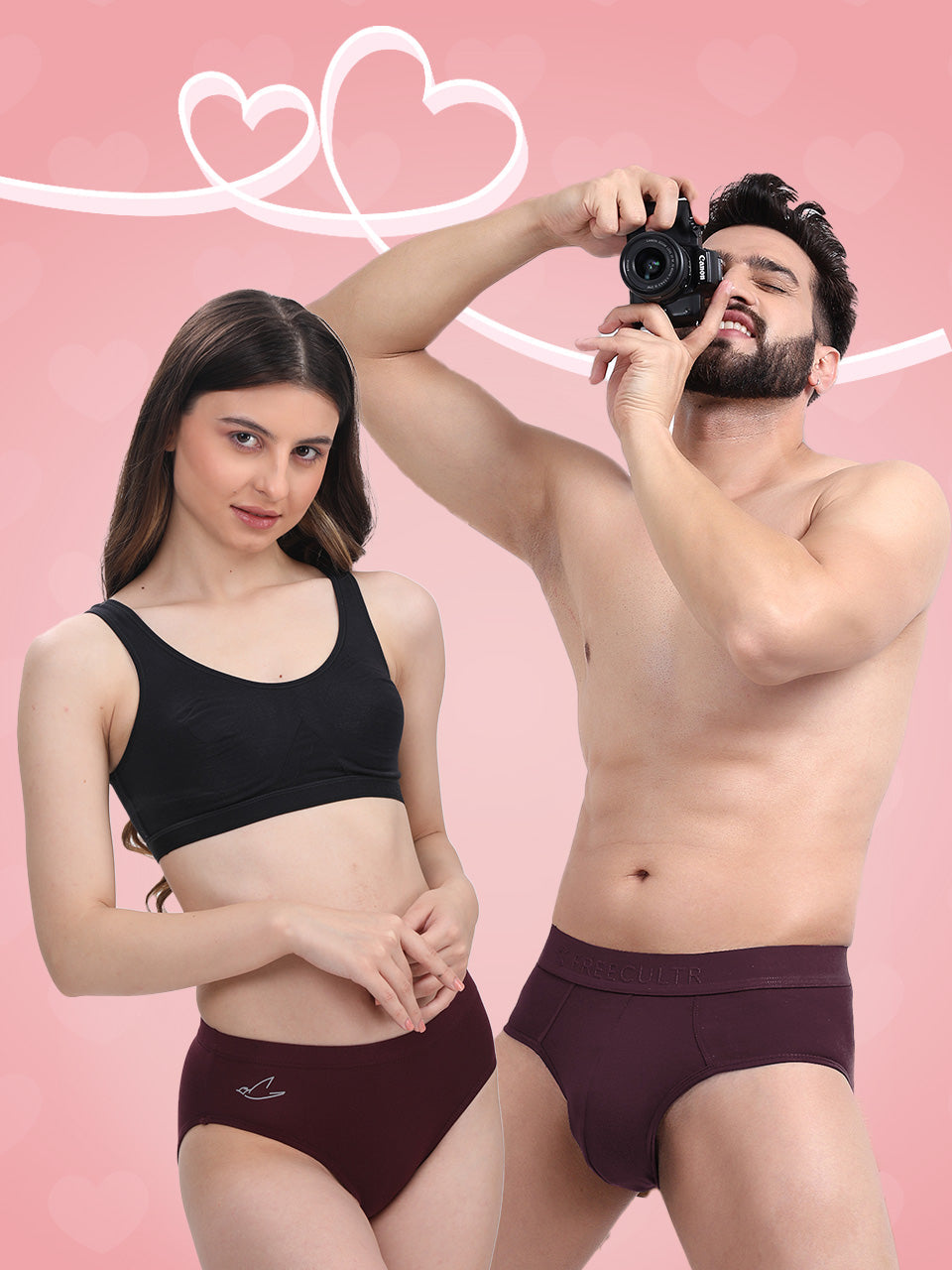
The Foundation of Performance: Understanding Fabric Technologies in Womens Gym Wear
The core of optimal comfort and enhanced performance in activewear lies deep within the fabric itself. Modern womens gym wear is engineered with sophisticated textile technologies designed to support the body through various physical demands. Understanding these innovations is crucial for making informed choices that genuinely impact your workout experience.
- Moisture-Wicking This is perhaps the most fundamental technology in athletic apparel. Unlike cotton, which absorbs sweat and stays wet, moisture-wicking fabrics are designed with capillary action in mind. They draw sweat away from your skin's surface and transport it to the fabric's outer layer, where it can evaporate quickly. This process keeps you dry, prevents chafing. helps regulate body temperature, making your workout more comfortable and hygienic. Common materials used include polyester, nylon. certain blends.
- Breathability Complementary to moisture-wicking, breathable fabrics allow air to circulate freely. This ventilation helps dissipate heat build-up, preventing your body from overheating during intense activity. Many womens gym wear items feature strategically placed mesh panels or open-weave designs in high-sweat areas like the back, underarms, or behind the knees to maximize airflow.
- Four-Way Stretch Essential for unrestricted movement, four-way stretch fabrics can expand and contract both horizontally and vertically. This elasticity, often achieved through the incorporation of spandex (also known as elastane or Lycra), ensures that your leggings, tops. shorts move seamlessly with your body, whether you're performing deep squats, dynamic yoga poses, or sprinting. Without adequate stretch, your movements would be restricted, potentially leading to discomfort or even injury.
- Compression Compression fabrics are designed to exert a gentle, even pressure on the muscles. This technology is increasingly popular in womens gym wear, particularly in leggings and sports bras. The level of compression can vary, from light support to firm.
These properties work synergistically. For example, a high-quality pair of womens gym wear leggings might combine moisture-wicking polyester with four-way stretch spandex and targeted compression zones to offer a comprehensive performance solution. Investing in gear that integrates these technologies means investing in a more effective and enjoyable fitness journey.
Achieving Optimal Comfort: Design, Fit. Construction
Beyond fabric technology, the design, fit. construction of womens gym wear are paramount for optimal comfort. A garment can have the best moisture-wicking fabric. if it doesn't fit correctly or is poorly constructed, it will detract from your workout.
- The Importance of Fit
- Too Tight While compression has its benefits, overly tight clothing can restrict blood flow, limit range of motion. cause discomfort or even skin irritation. It can also make it difficult to breathe deeply, especially around the chest or waist.
- Too Loose Conversely, baggy gym wear can get in the way, snag on equipment, or ride up/down during movement. This constant readjustment is distracting and can hinder performance. Imagine trying to hold a complex yoga pose with a top constantly falling over your head – it's frustrating and takes away from your focus. A good fit allows you to forget what you're wearing and concentrate on your activity.
- Seam Types The type of seams used in womens gym wear significantly impacts comfort, especially during repetitive movements.
- Flatlock Seams These are a hallmark of high-quality activewear. Unlike traditional seams that create a raised ridge, flatlock seams lie completely flat against the skin. This construction dramatically reduces friction and prevents chafing, which can be a major issue during long runs or intense workouts.
- Bonded Seams In some premium garments, seams are bonded (glued) rather than stitched, offering an even smoother, almost seamless feel, further minimizing irritation.
- Waistbands The design of the waistband in leggings and shorts is critical for both comfort and support.
- High-Waisted Popular for their flattering fit and superior coverage, high-waisted designs offer excellent abdominal support, preventing the garment from rolling down during bends or jumps. They provide a feeling of security and confidence.
- Mid-Rise A versatile option that sits comfortably around the natural waist, offering a balance between coverage and freedom.
- Drawstrings Some styles incorporate an internal drawstring, allowing for adjustable fit and extra security, particularly beneficial for running or high-impact activities where a secure fit is essential.
- Ergonomic Design Elements Thoughtful design features enhance comfort and performance.
- Gussets A diamond or triangular-shaped piece of fabric sewn into the crotch of leggings and shorts, a gusset improves flexibility, reduces stress on seams. prevents tearing. It also allows for a greater range of motion without pulling or discomfort.
- Articulated Knees/Elbows Pre-shaped panels around joints provide a more natural fit and allow for unrestricted bending and extending, common in cold-weather gear or technical outerwear.
Consider the experience of a dedicated lifter, Alex. She once bought a pair of cheap leggings with traditional seams. After a heavy leg day, she found painful chafing marks on her inner thighs. Switching to womens gym wear with flatlock seams and a supportive, high-rise waistband transformed her workouts, allowing her to focus entirely on her lifts without discomfort or constant adjustments.
Elevating Performance: The Role of Compression and Support in Womens Gym Wear
While comfort is foundational, modern womens gym wear goes a step further by actively contributing to enhanced athletic performance through strategic compression and support features. These elements are backed by sports science and designed to optimize your body's capabilities.
- Definition of Compression Wear Compression garments are typically made from a blend of nylon or polyester and spandex, designed to fit snugly and apply graduated pressure to specific muscle groups. This pressure is not just about a tight fit; it's about stimulating physiological responses.
- Benefits of Compression
- Improved Blood Circulation The gentle pressure helps to increase blood flow back to the heart, which can enhance oxygen delivery to working muscles and expedite the removal of metabolic waste products like lactic acid. This can lead to reduced muscle soreness during and after exercise.
- Reduced Muscle Fatigue and Oscillation Compression stabilizes muscles, reducing vibration and oscillation during high-impact activities. This minimized movement can decrease muscle damage and fatigue, allowing you to train harder for longer. Studies in sports physiology often point to compression's role in mitigating muscle trauma.
- Enhanced Recovery By promoting better circulation and reducing muscle soreness, compression wear can contribute to faster recovery post-workout, preparing your body for the next session more quickly.
- Proprioception (Body Awareness) The constant pressure from compression garments can heighten your proprioception – your body's awareness of its position in space. This can improve stability, balance. coordination, potentially leading to more efficient movements and a reduced risk of injury.
- Reduced Swelling For activities that involve prolonged standing or repetitive motion, compression can help reduce swelling in the extremities.
- Types of Support in Womens Gym Wear
- Sports Bras A critical component of womens gym wear, sports bras are engineered to minimize breast movement during physical activity, preventing discomfort and potential long-term tissue damage. They are categorized by impact level:
- Low Impact Suitable for yoga, Pilates, or walking (e. g. , light support with thin straps, often crop-top style).
- Medium Impact Ideal for cycling, brisk walking, or elliptical training (e. g. , wider straps, more coverage, some encapsulation).
- High Impact Essential for running, HIIT, or jumping activities (e. g. , maximum encapsulation and compression, often with racerback designs and wide underbands).
- Leggings with Targeted Compression Many performance leggings feature varying levels of compression in different areas. For instance, tighter compression around the thighs and calves can support major muscle groups, while the waistband offers firm core support.
| Compression Level | Application in Womens Gym Wear | Best For |
|---|---|---|
| Light Compression | Everyday activewear, yoga leggings, light support tops | Yoga, Pilates, walking, general gym sessions, casual wear |
| Medium Compression | Running tights, squat-proof leggings, medium-impact bras | Running, cycling, weightlifting, HIIT, circuit training |
| Firm Compression | Recovery tights, performance-focused race gear, high-impact bras | Marathons, intense training sessions, post-workout recovery |
Sarah, an avid runner, found that switching to medium-compression running tights significantly reduced the muscle fatigue she experienced during her long-distance training. The enhanced support made her feel more stable and confident, enabling her to push her limits without the usual post-run soreness.
Choosing Your Perfect Womens Gym Wear: Activity-Specific Considerations
The "best" womens gym wear isn't a one-size-fits-all solution. Optimal comfort and performance are highly dependent on the specific activity you're engaging in. Tailoring your wardrobe to your workout ensures you're equipped for success and comfort.
- Yoga and Pilates
- Key Features Flexibility, breathability, non-restrictive fit, soft hand-feel.
- Why it Matters These activities demand a full range of motion and often involve holding poses. Fabrics should stretch effortlessly with your body without digging in or riding up. Seamless designs and flatlock seams are highly beneficial to prevent irritation during floor work. Opaque (squat-proof) leggings are a must to ensure confidence in various positions.
- Actionable Takeaway Look for buttery-soft fabrics with four-way stretch, high-waisted leggings for core support and coverage. light-to-medium support sports bras that allow for deep breathing.
- Running
- Key Features Moisture-wicking, lightweight, secure fit, minimal chafing, reflective elements (for outdoor).
- Why it Matters Runners generate a lot of sweat and require gear that keeps them dry and comfortable over long distances. A secure fit prevents bounce and chafing, while lightweight materials minimize drag. Reflective details are crucial for safety during low-light runs.
- Actionable Takeaway Opt for technical fabrics like polyester or nylon blends. Choose medium-to-firm compression leggings or shorts with pockets for essentials. A high-impact sports bra is non-negotiable. For colder weather, consider thermal layers that still wick moisture.
- Weightlifting and Strength Training
- Key Features Durability, squat-proof, robust support, flexible but structured.
- Why it Matters Lifting involves dynamic movements and contact with equipment. Gear needs to withstand friction and provide ample coverage during deep squats and lunges. Strong support around the core and glutes can enhance stability.
- Actionable Takeaway Look for thicker, durable fabrics that are guaranteed squat-proof. High-waisted leggings offer excellent core support. A medium-to-high impact sports bra is advisable, depending on the intensity of your movements.
- High-Intensity Interval Training (HIIT) and Cardio
- Key Features Maximum sweat-wicking, secure fit, high flexibility, breathability.
- Why it Matters HIIT involves rapid, explosive movements and generates significant sweat. Your womens gym wear must stay put, wick moisture aggressively. allow for full, uninhibited motion.
- Actionaway Takeaway Prioritize highly breathable, quick-drying fabrics. Choose leggings or shorts with a very secure, often compressive, fit to prevent shifting. A high-impact sports bra is essential for stability during jumping and quick directional changes.
By aligning your womens gym wear choices with your intended activity, you create a synergy between your body and your apparel, allowing you to focus purely on your performance and enjoy every moment of your workout.
Longevity and Care: Maximizing Your Womens Gym Wear Investment
High-quality womens gym wear is an investment in your comfort, performance. overall fitness journey. To ensure your activewear continues to perform at its best and lasts for years, proper care is essential. Neglecting care instructions can degrade fabric technology, leading to premature wear and tear.
- Washing Instructions
- Cold Water and Gentle Cycle Always wash your womens gym wear in cold water on a gentle cycle. Hot water can break down the elastic fibers (spandex) that give your garments their stretch and compression properties.
- Turn Inside Out This protects the outer surface of the fabric and any reflective details or logos from abrasion during the wash cycle.
- Use a Mild Detergent Harsh detergents can leave residue that clogs the pores of moisture-wicking fabrics, reducing their effectiveness. Avoid detergents with strong dyes or perfumes.
- Separate by Color To prevent dye transfer, especially with vibrant activewear, wash similar colors together.
- Zip Up Zippers and Fasten Hooks This prevents them from snagging on other garments or getting damaged themselves. Consider using a mesh laundry bag for delicate items like sports bras to protect them further.
- Avoid Fabric Softener This is perhaps the most crucial rule for activewear. Fabric softener leaves a waxy residue that coats the fibers of moisture-wicking fabrics. This coating hinders the fabric's ability to pull sweat away from your skin, effectively negating its primary performance benefit.
- Avoid Bleach Bleach will damage the fabric fibers and can cause discoloration.
- Drying Your Womens Gym Wear
- Air Dry is Best The heat from tumble dryers is the enemy of elastic fibers. High heat can cause spandex to lose its stretch, leading to saggy leggings and less supportive sports bras. Always air dry your womens gym wear by laying it flat or hanging it on a line, away from direct sunlight.
- If You Must Tumble Dry Use the lowest heat setting and remove garments as soon as they are dry. This should be a last resort.
- Storage Tips
- Fold Neatly Avoid stuffing your activewear into drawers, which can stretch out elastic or create permanent creases.
- Separate from Cotton Storing gym wear separately can help prevent lint transfer, especially if you have dark-colored items.
Proper care not only preserves the performance characteristics of your womens gym wear but also extends its lifespan. This practice is not just about saving money; it's also an environmentally conscious choice, as making your garments last longer reduces textile waste. By following these simple steps, you ensure that your activewear continues to support your fitness goals for many workouts to come.
Conclusion
Ultimately, selecting women’s gym wear is far more than a fashion statement; it's a strategic investment in your well-being and performance. We’ve explored how the right fabrics, like advanced moisture-wicking blends and four-way stretch elastane, are crucial for optimal comfort, preventing chafing during a high-intensity HIIT session or offering unrestricted movement in a Pilates class. My personal tip? Always check the squat-proof quality of leggings – there’s nothing worse than feeling exposed mid-workout! Look for brands that are embracing current trends in sustainable activewear, utilizing recycled polyester or organic cotton, ensuring your choices are both ethical and high-performing. Embrace the power of well-chosen activewear. It’s about finding pieces that truly move with you, support you. make you feel confident. When you feel good in what you’re wearing, your focus shifts entirely to your workout, allowing you to push boundaries and achieve your fitness goals with enhanced performance. Don't just dress for the gym; dress for success, comfort. the incredible woman you are becoming.More Articles
Best Tanktop Fabrics – Ultimate Comfort & Breathable StyleWomen's Tees – Ultimate Softness & Perfect Fit for Everyday
Women's Camisole With Built In Bra – Elegant Layering & Discreet Support
Women's Tank Top With Built In Bra – Unrestricted Movement & Everyday Convenience
FAQs
Why is comfortable gym wear so vital for my workouts?
Comfort is absolutely essential because it allows you to fully focus on your exercise without distractions. Ill-fitting, restrictive, or scratchy clothes can chafe, hinder your movement. generally make your workout less enjoyable and effective. When your gear feels good, you can push harder and concentrate on your performance, not your outfit.
What kind of fabrics should I look for to get the best performance?
For optimal performance, always go for technical, synthetic fabrics like polyester, nylon, spandex (elastane), or blends of these. They're designed to wick away sweat, dry quickly, offer excellent stretch for full range of motion. can even provide muscle support. Try to avoid heavy cotton for intense workouts, as it absorbs moisture and stays wet, which can feel heavy and clammy.
Does compression gym wear actually help improve my performance or recovery?
Yes, it can! Compression wear is designed to provide targeted pressure on your muscles. This can help reduce muscle vibration and fatigue during exercise, potentially leading to better performance. Post-workout, it's believed to aid in recovery by improving blood circulation and reducing muscle soreness. Many people also find the supportive, snug fit quite motivating.
How do I know if my gym clothes fit me correctly?
Good question! Your gym wear should feel like a supportive second skin – snug but never restrictive. You should be able to move freely through your full range of motion without anything digging in, sagging, or riding up. For leggings, make sure the waistband stays put and the fabric isn't see-through when you bend or squat. For tops, ensure you have full coverage during overhead movements.
Are there specific outfits for different types of workouts?
Definitely! While some items are versatile, specialized gear can really enhance your experience. For high-impact activities like running or HIIT, you'll want high-support sports bras and highly breathable, moisture-wicking fabrics. For yoga or Pilates, flexibility is key, so soft, stretchy leggings and tops that won't shift during inversions are ideal. Strength training often benefits from durable, supportive fabrics that allow for a full range of motion.
What's the big deal with sweat-wicking properties? Why are they so essential?
Sweat-wicking fabrics are crucial because they draw moisture (sweat) away from your skin and move it to the outer surface of the fabric, where it can evaporate quickly. This process keeps you feeling dry, cool. comfortable throughout your workout, preventing that heavy, clammy feeling. It's vital for regulating your body temperature and helping to prevent chafing.
How often should I replace my gym wear, especially sports bras?
The lifespan of your gym wear depends on factors like frequency of use, washing habits. initial quality. Generally, if you notice significant stretching, loss of compression, fraying, fading, or persistent odor even after washing, it might be time for new gear. Sports bras, in particular, lose their elasticity and support over time; if used frequently, they often need replacing every 6 to 12 months to maintain their effectiveness.

